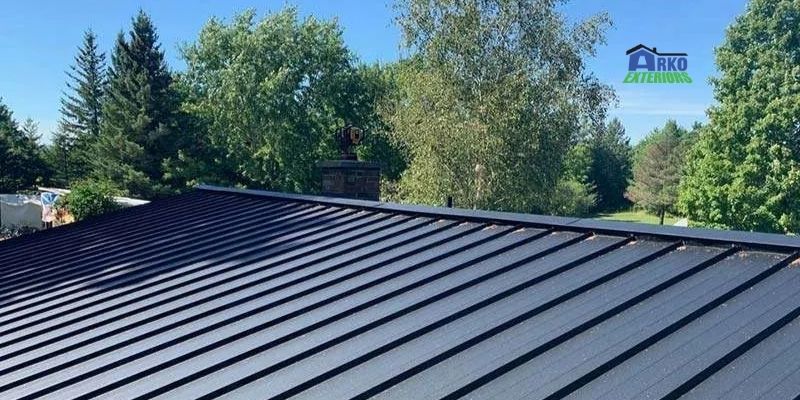Summer can be tough on your roof. The intense heat and sun exposure can cause shingles to deteriorate prematurely, while sudden thunderstorms can batter your roof with high winds, rain, and hail. Keeping your roof in good shape is crucial for protecting the rest of your home from water damage and expensive repair bills.
As the summer months approach, it’s a good idea to take some preventative measures to safeguard your roof against the seasonal elements. From simple maintenance tasks to more involved repairs, there are several steps you can take to ensure your roof withstands the summer onslaught. In this blog post, we’ll cover key tips for protecting your roof, so you can relax and enjoy the sunny days ahead without worrying about ceiling leaks or missing shingles.
Whether you have an asphalt shingle roof or another roofing material, preparing your roof properly can extend its lifespan and prevent costly repairs down the line. Ready to get your roof summer-ready? Let’s dive in!
1. Schedule a Professional Roof Inspection
A professional roof inspection before summer is crucial. An experienced roofer can spot issues you may miss, like cracked or curled shingles, damaged flashing around chimneys/vents, and deteriorated sealants. They’ll check for proper roof ventilation and assess granule loss on asphalt shingles. The roofer can identify roof components that need replacement or repair to prevent leaks and extend your roof’s life. It’s best to tackle any necessary work before summer storms hit.
2. Clean Out Gutters and Downspouts
Clogged gutters are a major roof hazard in summer. When rain gutters get filled with leaves, twigs, and other debris, rainwater has nowhere to go and can back up under shingles or soak the roof’s wooden underlayment. This creates the perfect conditions for leaks, wood rot, and potential interior water damage. Use a gutter scoop or trowel to remove built-up gunk, then flush downspouts with a hose to clear away any remaining obstructions. Consider gutter guards to reduce future buildup.
3. Trim Overhanging Trees
Trees that hang directly over your roof spell trouble when summer storms with high winds and heavy rain roll in. Loose branches and limbs can scrape across shingles, puncturing or tearing them. Falling branches are an obvious roof hazard too. Trim back any trees giving your roof a buzz cut, leaving several feet of clearance space. This simple preventative measure protects your roof’s integrity.
4. Inspect and Reseal Roof Flashing
Roof flashing is the metal strips installed around chimneys, vents, skylights, and valleys to prevent water penetration. However, flashing sealant can dry out and crack over time, leaving those areas vulnerable to leaks. Carefully inspect all roof flashing and reseal any loose areas or cracks with a polyurethane caulk or roof cement to create a new watertight seal before summer rains arrive.
5. Check for Proper Attic Ventilation
Adequate attic ventilation is key for preventing premature roof deterioration from heat and moisture buildup. In summer months, a poorly vented attic acts like an oven, super-heating the underside of your roof and baking the shingles. This can cause shingles to buckle and crack. Ensure attic ventilation is up to code with a combination of soffit vents, ridge vents, and attic fans to allow hot air to properly escape.
6. Apply a Roof Sealant or Coating
If your asphalt roof is showing signs of age, like widespread granule loss, curled edges, or surface cracks, it may benefit from an elastomeric roof coating or sealant. These products can buy you several more years of life before a full roof replacement is needed. The coating protects shingles from further UV ray damage while filling in hairline cracks and creating a moisture barrier.
7. Install New Roof Boots
Roof boots or pipe collar flashings, are the rubber gaskets that cover roof penetrations for plumbing, heating, and exhaust pipes. Over time, they can dry out and crack, allowing water to seep through. Inspect all roof boots before summer and replace any that are dried, cracked, or damaged with new neoprene gaskets to reseal those penetration points.
8. Check for Signs of Moss/Algae Growth
In humid summer conditions, moss, algae, and even mushrooms can start to take root on shady areas of your roof’s surface if there’s excessive moisture present. This moisture buildup accelerates the deterioration of roofing materials. Use a roof brush or roof cleaning solution to scrub away any moss/fungi growth. Adding zinc or copper strips can also help prevent future growth.
9. Secure or Repair Loose Shingles/Flashing
Summer thunderstorms with high winds can easily rip off already loose or damaged shingles and flashing pieces. Replace any missing shingles and re-secure any loose sections using roofing cement and nails/screws to properly anchor them down before a storm hits. Flapping shingles will only continue to tear off surrounding materials.
10. Consider a Roof Replacement
If your roof is nearing the end of its projected lifespan (20+ years for asphalt), it may make more sense to replace the whole roof before summer rather than throwing money at short-term repairs. A new roof provides peace of mind and full protection against whatever summer elements roll your way, from heat to hail storms.
Summary:
As the mercury rises and summer storms roll in, don’t let the seasonal elements take a toll on your roof. By being proactive with inspections, maintenance, and targeted repairs, you can safeguard your roof’s integrity all summer long.
Remember to schedule a professional roof inspection to catch any issues early. Consistently clear out debris from gutters and downspouts to allow proper drainage. Trim back overhanging branches to prevent wind damage. Reseal any deteriorating flashing, roof boots, and shingles to stop water penetration. Ensure your attic is well-vented to release heat buildup. And if it’s reached the end of its lifespan, bite the bullet and opt for a full roof replacement – it pays off in the long run.
With some simple preparation like cleaning, coating applications, and minor repair work, you can head into summer confident that your roof can withstand the harsh conditions. Don’t risk major problems and interior damage from leaks. Set aside a little time and money for preventative roof maintenance – it pales in comparison to the potential costs of neglecting your roof’s summer security.

